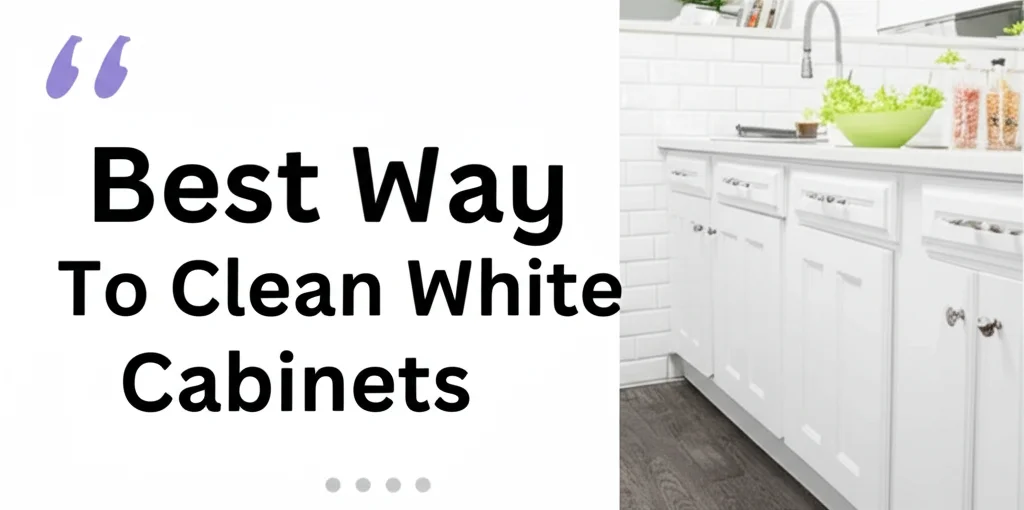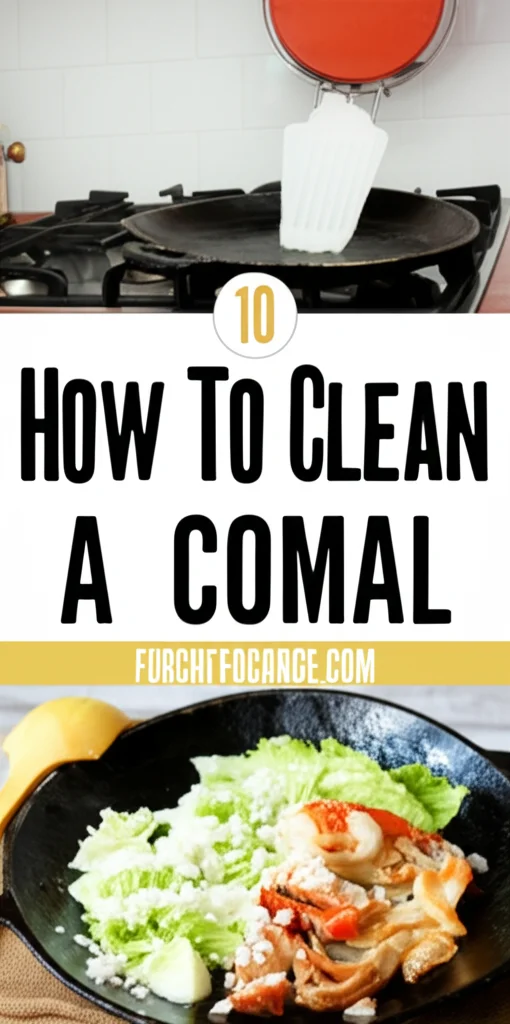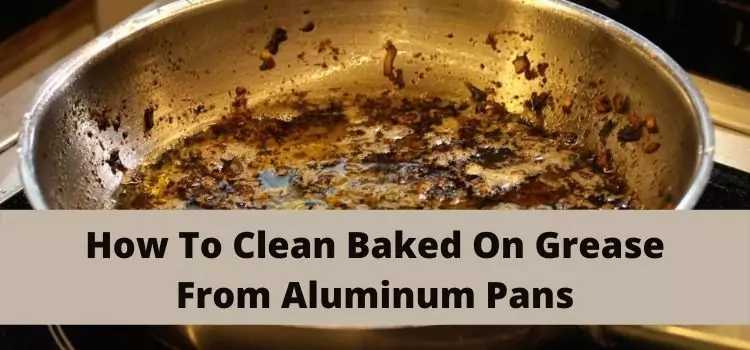· Kitchen Cleaning · 6 min read
Best Way To Clean White Cabinets

Sparkling Clean: The Best Way To Clean White Cabinets
Are your white kitchen cabinets looking a little dull? Don’t worry, you’re not alone! White cabinets brighten up a kitchen, but they also show dirt and grime easily. Keeping them clean doesn’t have to be a chore. This article will reveal the best way to clean white cabinets, offering simple and effective methods to restore their shine. We’ll cover everything from daily maintenance to tackling stubborn stains, ensuring your kitchen always looks its best. Let’s dive in and get those cabinets gleaming!
The Quick Answer:
The best way to clean white cabinets involves a gentle solution of warm water and dish soap for regular cleaning, followed by a rinse and dry. For tougher grime, a baking soda paste or a solution of vinegar and water works wonders. Always test any cleaner in an inconspicuous area first.
Takeaway:
- Regular cleaning prevents buildup.
- Gentle cleaners are best for preserving the finish.
- Always test cleaners before applying them broadly.
Why White Cabinets Need Special Care
White cabinets are a popular choice for kitchens because they create a bright and airy feel. However, this brightness comes with a responsibility: they show every speck of dust, grease splatter, and fingerprint. Unlike darker cabinets that can hide imperfections, white surfaces demand regular attention. Ignoring this can lead to a buildup of grime that becomes increasingly difficult to remove over time. Proper cleaning not only maintains their appearance but also protects the cabinet finish, extending its lifespan.
Daily & Weekly Maintenance: Preventing Grime Buildup
Consistent, light cleaning is the key to keeping your white cabinets looking their best. Think of it like brushing your teeth – a little effort every day prevents bigger problems down the road. A quick wipe-down after cooking or a weekly cleaning session can make a huge difference.
- Daily Wipe-Down: Use a damp microfiber cloth to wipe away spills and splatters immediately.
- Weekly Cleaning: Mix a few drops of dish soap with warm water. Dip a soft cloth into the solution, wring it out well, and wipe down all cabinet surfaces.
- Dry Thoroughly: Always dry the cabinets with a clean, dry microfiber cloth to prevent water spots. This is especially important for painted cabinets.
The Power of Dish Soap and Warm Water
For most routine cleaning, a simple solution of dish soap and warm water is all you need. Dish soap is designed to cut through grease and grime, making it perfect for kitchen cabinets. It’s also gentle enough to avoid damaging most cabinet finishes.
- Mix the Solution: Combine 1-2 teaspoons of dish soap with a gallon of warm water.
- Apply and Wipe: Dip a soft cloth into the solution, wring it out well, and gently wipe down the cabinets.
- Rinse: Use a clean, damp cloth to rinse away any soap residue.
- Dry: Dry the cabinets with a clean, dry microfiber cloth. You can also find more information on how to clean your floors at https://www.beacleaner.com/how-to-clean-luxury-vinyl-plank-flooring/.
Tackling Stubborn Grease and Grime with Baking Soda
Sometimes, dish soap and water aren’t enough to tackle stubborn grease and grime. That’s where baking soda comes in. Baking soda is a mild abrasive that can gently scrub away tough messes without damaging the cabinet finish. It’s also a natural deodorizer, leaving your kitchen smelling fresh.
- Make a Paste: Mix baking soda with a small amount of water to create a paste.
- Apply to Stains: Apply the paste to the greasy or grimy areas.
- Gentle Scrubbing: Gently scrub the area with a soft cloth or sponge. Avoid using abrasive scrubbers, as they can scratch the finish.
- Rinse and Dry: Rinse the area thoroughly with clean water and dry with a clean cloth.
Vinegar and Water: A Natural Cleaning Solution
Vinegar is another natural cleaning powerhouse. Its acidity helps to cut through grease and grime, and it’s also effective at disinfecting surfaces. However, it’s important to dilute vinegar with water, as undiluted vinegar can damage some cabinet finishes.
- Dilution Ratio: Mix equal parts white vinegar and warm water.
- Spray and Wipe: Pour the solution into a spray bottle and spray it onto the cabinets. Let it sit for a few minutes.
- Wipe Clean: Wipe the cabinets clean with a soft cloth.
- Rinse and Dry: Rinse with clean water and dry thoroughly. If you’re also dealing with grout issues, you might find this article helpful: https://www.beacleaner.com/how-to-clean-floor-grout-without-scrubbing/.
Cleaning Different Cabinet Materials
The best way to clean your white cabinets also depends on the material they’re made of. Different materials require different cleaning approaches to avoid damage.
- Painted Cabinets: Use gentle cleaners like dish soap and water or vinegar and water. Avoid abrasive cleaners, as they can scratch the paint.
- Wood Cabinets: Use a wood cleaner specifically designed for cabinets. Avoid excessive water, as it can damage the wood.
- Laminate Cabinets: Laminate is durable and easy to clean. Dish soap and water work well, but avoid abrasive cleaners.
- Thermfoil Cabinets: Thermfoil is sensitive to heat. Avoid using hot water or steam cleaners. A gentle cleaner and a soft cloth are best.
Dealing with Specific Stains and Marks
Sometimes, you’ll encounter specific stains or marks that require special attention. Here’s how to tackle some common culprits:
- Fingerprints: A quick wipe with a damp microfiber cloth usually does the trick.
- Grease Splatters: Use a degreasing cleaner or a baking soda paste.
- Food Stains: Try a paste of baking soda and water or a vinegar and water solution.
- Permanent Marker: Rubbing alcohol can often remove permanent marker, but test it in an inconspicuous area first.
- Water Spots: Wipe with a clean, dry cloth. For stubborn water spots, try a vinegar and water solution. You might also want to check out this article on removing mold: https://www.beacleaner.com/how-to-remove-mold-from-painted-walls/.
FAQ: Your White Cabinet Cleaning Questions Answered
Q: How often should I deep clean my white cabinets? A: A deep clean, involving more thorough scrubbing and stain removal, should be done every 3-6 months, depending on how much use your kitchen gets. Regular weekly cleaning will minimize the need for deep cleaning.
Q: Can I use bleach to clean my white cabinets? A: While bleach can whiten, it’s generally not recommended for cabinets. It can damage the finish and cause discoloration.
Q: What’s the best way to prevent my white cabinets from yellowing? A: Avoid exposing your cabinets to direct sunlight for extended periods. Regular cleaning and using protective coatings can also help prevent yellowing.
Q: Is it safe to use a steam cleaner on my cabinets? A: It depends on the cabinet material. Avoid steam cleaners on thermfoil cabinets, as the heat can damage the surface. For other materials, test in an inconspicuous area first.
Q: My cabinets have a sticky residue. How do I remove it? A: Try using a solution of warm water and vinegar. If that doesn’t work, a commercial adhesive remover may be necessary, but test it carefully first.
Conclusion: Keep Your White Cabinets Shining
Maintaining sparkling white cabinets is achievable with a little consistent effort. Remember, the best way to clean white cabinets is to prevent grime buildup through regular maintenance. Use gentle cleaners like dish soap and water, vinegar, or baking soda, and always test any new cleaner in an inconspicuous area first. By following these tips, you can keep your kitchen looking bright, clean, and inviting for years to come. Don’t let dirty cabinets dim your kitchen’s shine – start cleaning today! For more cleaning tips and tricks, explore our other articles, like this one on cleaning floors: https://www.beacleaner.com/how-to-clean-hardwood-floors-with-vinegar/.




